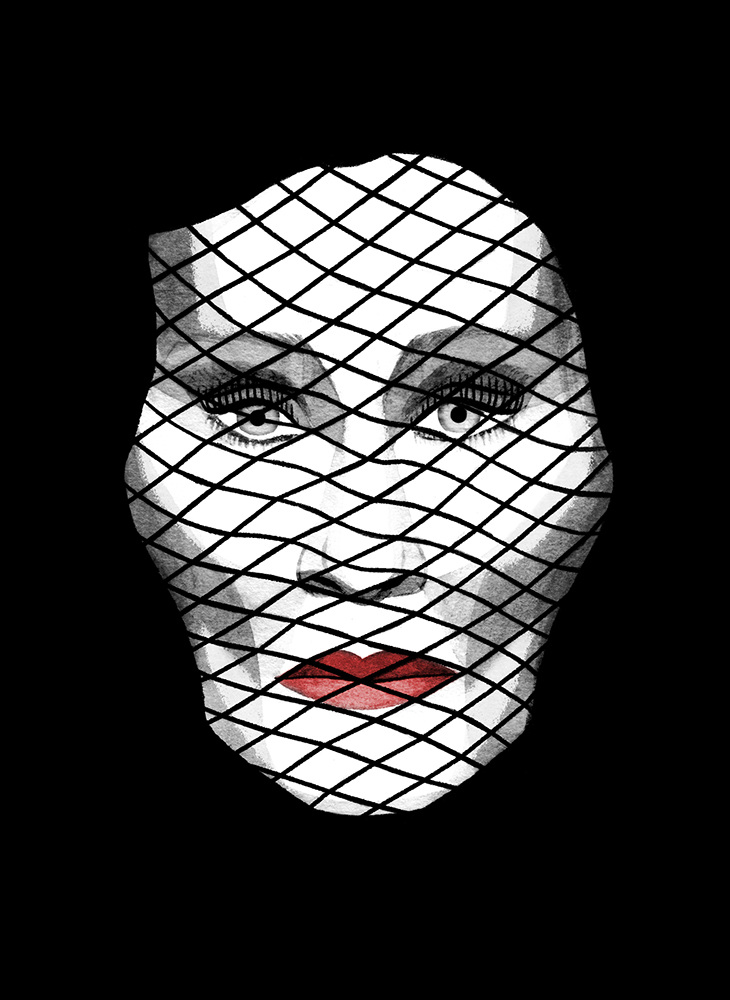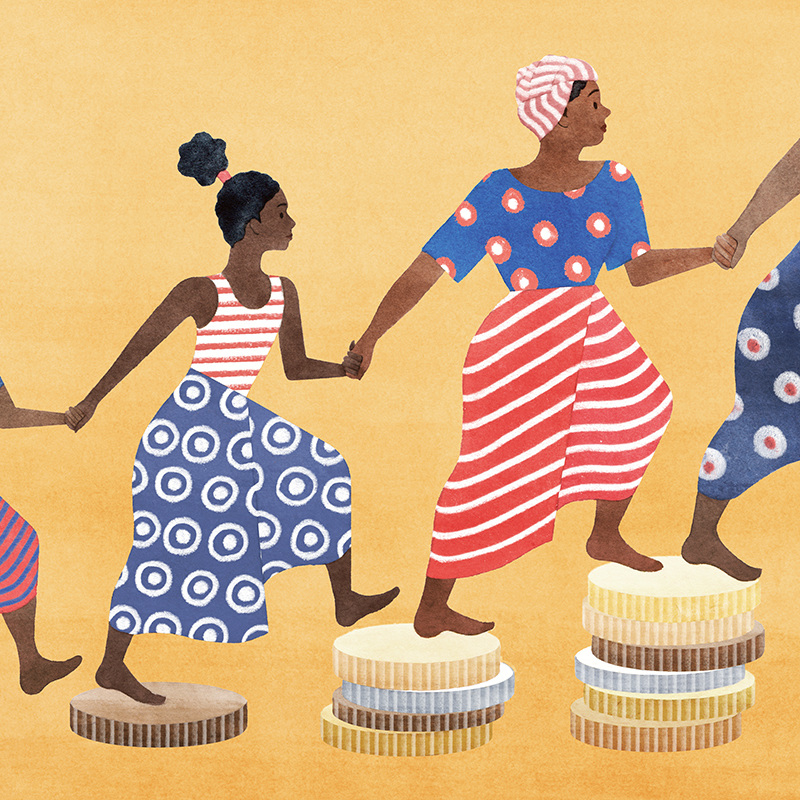This Editorial Illustrator Wants to Make Work Actually Useful to Art Directors
MIKE O'DONNELL / EDITOR
WNW Member Eleni Kalorkoti has collaborated consistently with the likes of The New York Times and The New Yorker, creating painterly illustrations that have the ability to accentuate the text and tell a story all their own. Below, Eleni shares why she worked hard at becoming a better illustrator "that was in any way useful to art directors", how her two aforementioned clients differ in their visual demands, and what her general process is for building an illustration from a rough concept to an appearance on The New York Times' celebrated "Year in Illustration" list.
Editor's Note: I promise we're not only featuring Eleni because she admires Paul Thomas Anderson as much as I do and mentions Phantom Thread not once but twice. Purely coincidental.
Tell us a bit about your creative background. Who is Eleni Kalorkoti and how did she get here?
Well, I probably spent too much of my life sitting alone in a room, drawing pictures. I also went to Edinburgh College of Art. I’m from Edinburgh, Scotland originally, despite my Greek name. I always loved pictures and understood them better than I understand most things, so I suppose I’ve just pointed myself in their direction and kept moving.
What were some of the challenges in launching your creative career?
My work not being good enough was a bit of an issue for a while! It took me about five years after graduating to develop my work into something that I actually liked and was in any way useful to art directors. During this period it was a struggle to both earn enough money to survive (by waitressing, etc) and to still find the time and energy to push my work and career forward as an illustrator.
A doodle for Google of Clare Hollingworth, on the occasion of her 106th birthday.
What do you see as the turning point in your creative development and career?
In 2013 I spent a whole year making a zine a month, every month. I used this as an excuse to try out different media, push my work in different directions, and as a way of forcing myself to produce lots of work whether anybody was commissioning me or not. At the end of that year, I got my first commission for The New York Times, and things have gotten steadily better ever since.
Illustration for The New York Times Travel section on facing travel fears after a terrorist attack.
You’ve worked consistently with both The New Yorker and The New York Times, two of the most coveted clients for illustrators. Can you share a bit about the similarities and differences of working with each?
Hmm. They both have really excellent and perceptive art directors, which makes working on projects with them challenging in all the best ways. I would say that an NYT illustration usually needs to be a distillation of the piece it is accompanying and suggest to the reader the topic and mood of the article, whereas most of the New Yorker pieces I’ve worked on are more about aesthetic pleasure and quite a precise representation of the show/author/work of art that the illustration is about.
Illustration for Hilton Als' review of the Sunset Boulevard musical for The New Yorker.
What’s your general process for editorial illustration projects? Do you work best with more specific briefs or with more freedom? Do you prefer to build off of rough sketches?
For editorial work my process is usually that I’ll read through the piece a couple of times, taking notes of any lines that stand out or visual ideas that pop into my head along the way. Then I scribble out some really quick and crappy thumbnails in my sketchbook, pick out the three or four ideas that aren’t terrible and draw them out into better, clearer sketches. Then I usually scan and roughly colour these in Photoshop and send them off to the art director for judgment.
My finals are usually hand drawn and painted in watercolour or ink, then scanned and cleaned up in Photoshop. In any kind of project, I prefer as strict a brief as possible. The offer that I can “do whatever I want” usually means that I will do nothing. For days.
Illustration for the New York Times Book Review on the future of artificial intelligence and it's possible effects on humanity.
What scares you most about making creativity your career?
How stressed I am most of the time. Can’t be healthy.
One book, one album, one movie, one show. Go.
I just finished Everything Ravaged, Everything Burned by Wells Tower, a very sparky collection of short stories. Loved it. I’ve been listening to the Chico Hamilton Quintet. I’m obsessed with Phantom Thread, and everything Paul Thomas Anderson has ever touched. We watch a lot of Brooklyn Nine-Nine in my house, and we never regret it.
What’s your favorite thing on the internet this week?
Just anything about Phantom Thread.
Poster for Bitch Magazine.
What did you want to be when you were growing up?
Older! Glib but true.
What do you do when Not Working?
Cinema, always.
Illustrating the rate of extreme poverty - which has halved in the past 25 years - for the Gates Foundation.
What’s the best advice you’ve ever heard or received that all creatives should hear?
There is no secret. You just have to work very hard, and show your pictures to people.
Who are some other WNW members whose work you admire?
I love Rose Blake’s work. And Skinny Ships!
What’s next for you? What are you working on now?
The usual mishmash of editorial jobs. I also make jewelry and quilts and I’m trying to find more time for those things, as well as some personal illustration work.
"Duck Sex and the Patriarchy" by Richard O Prum for the New Yorker.
Illustration inspired by the Handspring Puppet Company's production of Ulysses for The New Yorker.
Illustration for the New York Times on opening opportunities for people with criminal records.









